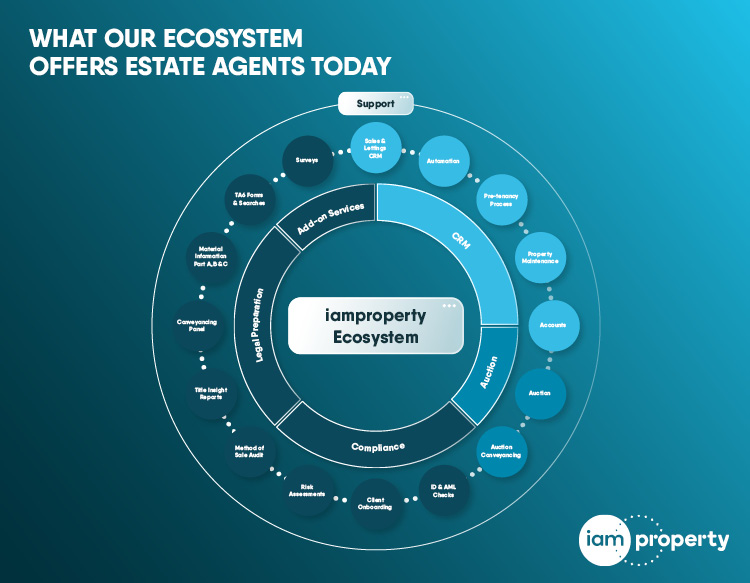
The level of new housing sale stock has almost halved when compared to the closing stages of 2022, research suggests.
Estate agent Barrows and Forrester analysed the level of new for sale stock being listed online across Britain since the start of the year and how this compared to November of last year.
The research shows that some 42,481 properties have come to market so far in 2023 - a considerable reduction of 46% when compared with the closing stages of 2022.
The declines are more pronounced in some parts of the country.
New sales stock level in Scotland has fallen by 70% since November 2022, with the city of Edinburgh seeing an 84% decline.
In the North West, the property pipeline has seen a 57% reduction, climbing to 64% in Liverpool specifically.
London has also seen new stock reaching the market drop by 57%, followed by the North East and Yorkshire and the Humber with a 54% drop
The East of England is home to the smallest reduction, with a 32% dip.
At city level, it’s Bradford (-63%) and Glasgow (-61%) that have seen some of the largest reductions in new for sale stock, with Newcastle seeing the smallest reduction at -20%.
James Forrester, managing director of Barrows and Forrester, said: “As interest rates have continued to climb, the increasing cost of borrowing has dampened the enthusiasm of the nation’s homebuyers and they can no longer afford to match the high asking prices seen during the pandemic market boom.
“However, while the back end of 2022 brought a heightened level of market turbulence, we’re now seeing a far more settled picture and this is expected to continue as the year progresses.
“As a result, many sellers who may have otherwise entered the fray in the new year are opting to sit tight for the time being and this has caused the level of new stock reaching the market to plummet.”
| Table shows the number of new homes listed within the last 14 days and how this has changed vs November of last year |
| |
|
Location |
November 2022 |
January 2023 |
Change n |
Change % |
| |
|
Scotland |
3,933 |
1,175 |
-2758 |
-70% |
| |
|
North West |
8,639 |
3,705 |
-4934 |
-57% |
| |
|
London |
12,399 |
5,376 |
-7023 |
-57% |
| |
|
North East |
2,544 |
1,169 |
-1375 |
-54% |
| |
|
Yorkshire and the Humber |
4,732 |
2,197 |
-2535 |
-54% |
| |
|
South West |
7,951 |
4,506 |
-3445 |
-43% |
| |
|
West Midlands region |
6,726 |
3,868 |
-2858 |
-42% |
| |
|
South East |
13,433 |
8,248 |
-5185 |
-39% |
| |
|
East Midlands |
6,732 |
4,270 |
-2462 |
-37% |
| |
|
Wales |
3,322 |
2,225 |
-1097 |
-33% |
| |
|
East of England |
8,986 |
6,086 |
-2900 |
-32% |
| |
|
England |
77,554 |
42,481 |
-35073 |
-45% |
| |
|
Great Britain |
85,202 |
46,092 |
-39110 |
-46% |
















.png)


.jpg)
.jpg)





%20-%20IMAGE%20Client%20Accounting%20%E2%80%93%20what%20are%20your%20options.jpg)


.png)
.png)
.png)
%20(002).png)






%20(002).jpg)



.png)




Join the conversation
Jump to latest comment and add your reply
Hello.
I wondered if you could provide more clarity around this data please?
Presumably the last 14 days is 26th Dec to 9th Jan?
When referring to November - is that November in its entirety? Or a 14 day period in Nov? If so please can you confirm which.
Thank you.
Sarah Edmundson
Surely comparing November to January isn’t comparing Apples with Apples?
For example, 2691 properties came onto the market in inner and o outer London between the 1st and the 9th of January 2023, and the same nine days in 2022, it was 2604.
Imho - one should be comparing the same month in different years. The property market is cyclical.
Apart from that - can’t disagree with with the sentiment of the article. Well written
This doesn’t make any sense at all.
If they’re including the period before 3 Jan when agents returned, then of course there are fewer than November.
Even so, and I’m not saying BestAgent data is perfect, but we have closer to 75,000 new properties coming to the market in the same period across the country. But given it’s over the holiday period, it’s pretty meaningless.
Please login to comment